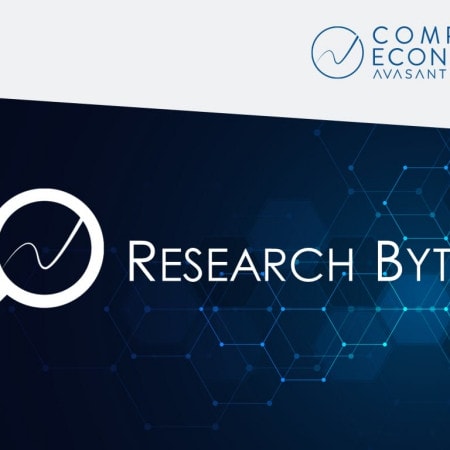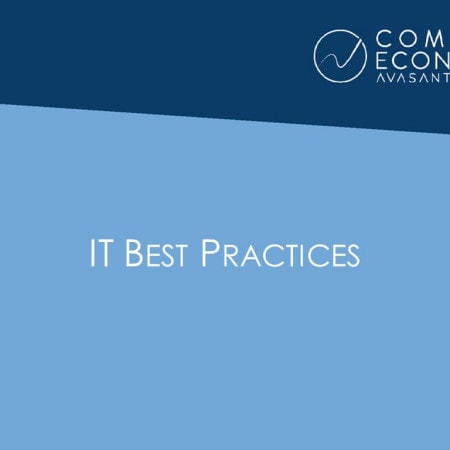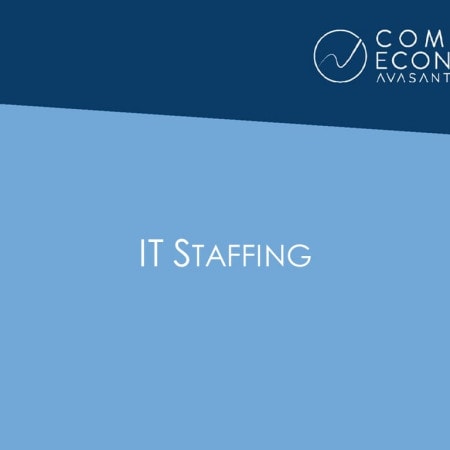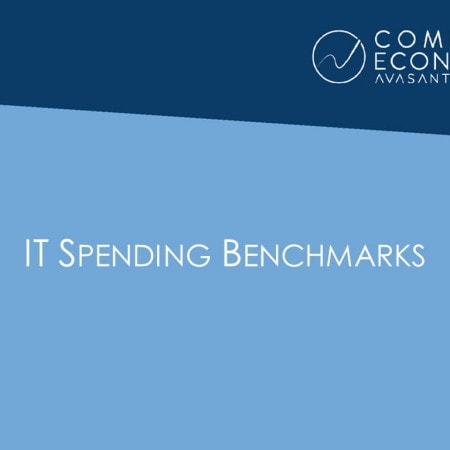-

2008 IT Spending Outlook: Anemic Growth
Although IT operational budgets increased by a healthy 5% this year over 2006 levels, Computer Economics is now detecting a slight bias toward underspending relative to budgets this year. Furthermore, IT executives are now lowering their expectations for increased IT spending in 2008. These trends are most pronounced among large organizations. This article presents the results of our Q4 survey of IT executives and what they mean for the IT spending outlook in 2008. (3 pp., 6 figs.)
November, 2007
-

Size Matters When It Comes to IT Security
IT security remains a major concern, from the largest enterprise to the home office user. The recently conducted Computer Economics IT Security Study looked into a variety of issues related to IT security budgets, incidents, and management practices. This report provides a new analysis of these metrics by applying cross comparison of organizational size with IT security problems. This analysis yields useful insights that IT managers may use to more effectively manage security spending.
March, 2005
-

Simplify to Reduce Costs
With the New Year upon us, many individuals are committing to personal resolutions to improve their life. Simplifying your IT environment can also achieve significant results, such as: reducing overall costs; improving the manageability and reliability of the environment; improving service levels and customer satisfaction; improving IT attitudes and reducing frustration; and allowing IT to focus on the areas critical to the business. What are ways to simplify your IT environment and achieve these benefits? Click here to purchase.
January, 2005
-

Improving IT Through Governance
Governance is a decision making and accountability framework for effective business management. Excellent governance is typically found in top performing companies and is a key factor for success. IT organizations are now placing a much greater emphasis on this important management concept, this article includes several elements that should be considered in developing an effective IT governance strategy. Click here to purchase.
November, 2004
-

Using Technology to Create Value for the Enterprise
As IT budgets begin to increase more than they have over the past two to three years, CIO's are moving from a mode of holding budgets tight to one of identifying strategic opportunities for the enterprise, prioritizing projects, and proving a value proposition in a cost conscious environment.
March, 2004
-

Start 2004 with a Sound Foundation for Enterprise Security
The new year means that IT managers will be applying new budgets toward solving all of the problems inherent in operating their systems. Although security spending represents a relatively small portion of the budget, careful application of those funds is essential in protecting both information and infrastructure. Computer Economics forecasts that about half of all organizations will be hit by at least one security attack during this year.
February, 2004
-

Increasing ROI for Training (Dec 2002)
Training expenditures as a percentage of annual payroll continues an upward trend, while total hours of training per employee continues a downward trend.
December, 2002
-

IS Staffing Trends 1997-2000 (Dec 2000)
Our analysis of IS staffing trends over the last four years shows that there has been an increase in the percent of staff in help desk functions and a shift of staff from applications programming positions into e-commerce positions. The percentage of IS help desk staff have increased from six percent in 1997/98 to ten percent in the year 2000.
August, 2002
-

IS Budget Trends (Feb 2002)
Computer Economics has conducted annual benchmarking studies of IS budgets and technology trends since 1990. This analysis examines data from three key benchmarks for the last three years and the last decade. The areas analyzed are budget changes, central IS budgets as a percent of revenue, and central IS budgets allocations.
May, 2002
-

Expected Budget and Staffing Trends in Manufacturing Companies (Jun 2001)
Computer Economics has conducted annual benchmarking studies of IT budgets and technology trends since 1990. This analysis examines data from five key benchmarks for the last five years, benchmarking results from the 2001 study, and what we expect to occur during the next two years. The areas analyzed are budget changes, central IS budgets as a percent of revenue, central IS spending per employee, workers supported per IS employee, and the growth or reduction in IS staff.
May, 2002
-

Computing Power Trends by Platform and Organization Revenue TriMark – 1998 to 2000 (Feb 2001)
The Computing Power Trends by Platform and Organization Revenue TriMark shows changes in usage of various hardware platforms for the years from 1998 to 2000 by organization revenue. The types of platforms include mainframes ($1 million or more), midrange systems ($100,000 to $999,999), LAN servers/superservers, and PCs/workstations. The Computing Power Trends by Platform TriMark is designed to provide IT executives with a comparison of changes in computing power by platform for the last three years.
May, 2002
-

Computing Power Trends by Platform and Organization Revenue DeciMark – 1991 to 2000 (Feb 2001)
The Computing Power Trends by Platform and Organization Revenue DeciMark shows changes in usage of various hardware platforms for the years from 1991 to 2000 by organization revenue. The types of platforms include mainframes ($1 million or more), midrange systems ($100,000 to $999,999), LAN servers/superservers, and PCs/workstations. The Computing Power Trends by Platform DeciMark is designed to provide IT executives with a comparison of changes in computing power by platform for the decade.
May, 2002
-

Computing Power Trends by Platform and Sector DeciMark – 1991 to 2000 (Feb 2001)
The Computing Power Trends by Platform and Sector DeciMark shows changes in usage of various hardware platforms for the years from 1991 to 2000. The types of platforms include mainframes ($1 million or more), midrange systems ($100,000 to $999,999), LAN servers/superservers, and PCs/workstations. The Computing Power Trends by Platform DeciMark is designed to provide IT executives with a comparison of changes in computing power by platform for the last decade.
May, 2002
-

Use of Contractor/Temporary Personnel DeciMark – 1991 to 2000 (Feb 2001)
The Use of Contractor/Temporary Personnel DeciMark provides the lower quartile, median, and upper quartile of contractor and temporary staff compared to the total staff in the information systems department. The data is presented for each sector or by organization size. The lower quartile (25th percentile) presents the lowest 25 percent of contractor/temporary personnel used by all of the organizations, where 25 percent used less than that amount. The median (50th percentile) is the level at which half of the organizations used less and the remainder used more. The upper quartile (75th percentile) presents the highest 25 percent of contractor/temporary personnel used by all of the organizations, where 25 percent used more than that amount. Results are presented for the period of 1991 to 2000.
May, 2002
-

Computing Power Trends by Platform and Sector TriMark – 1998 to 2000 (Feb 2001)
The Computing Power Trends by Platform TriMark shows changes in usage of various hardware platforms for the years from 1998 to 2000. The types of platforms include mainframes ($1 million or more), midrange systems ($100,000 to $999,999), LAN servers/superservers, and PCs/workstations. The Computing Power Trends by Platform TriMark is designed to provide IT executives with a comparison of changes in computing power by platform for the last three years.
May, 2002

 Grid View
Grid View List View
List View